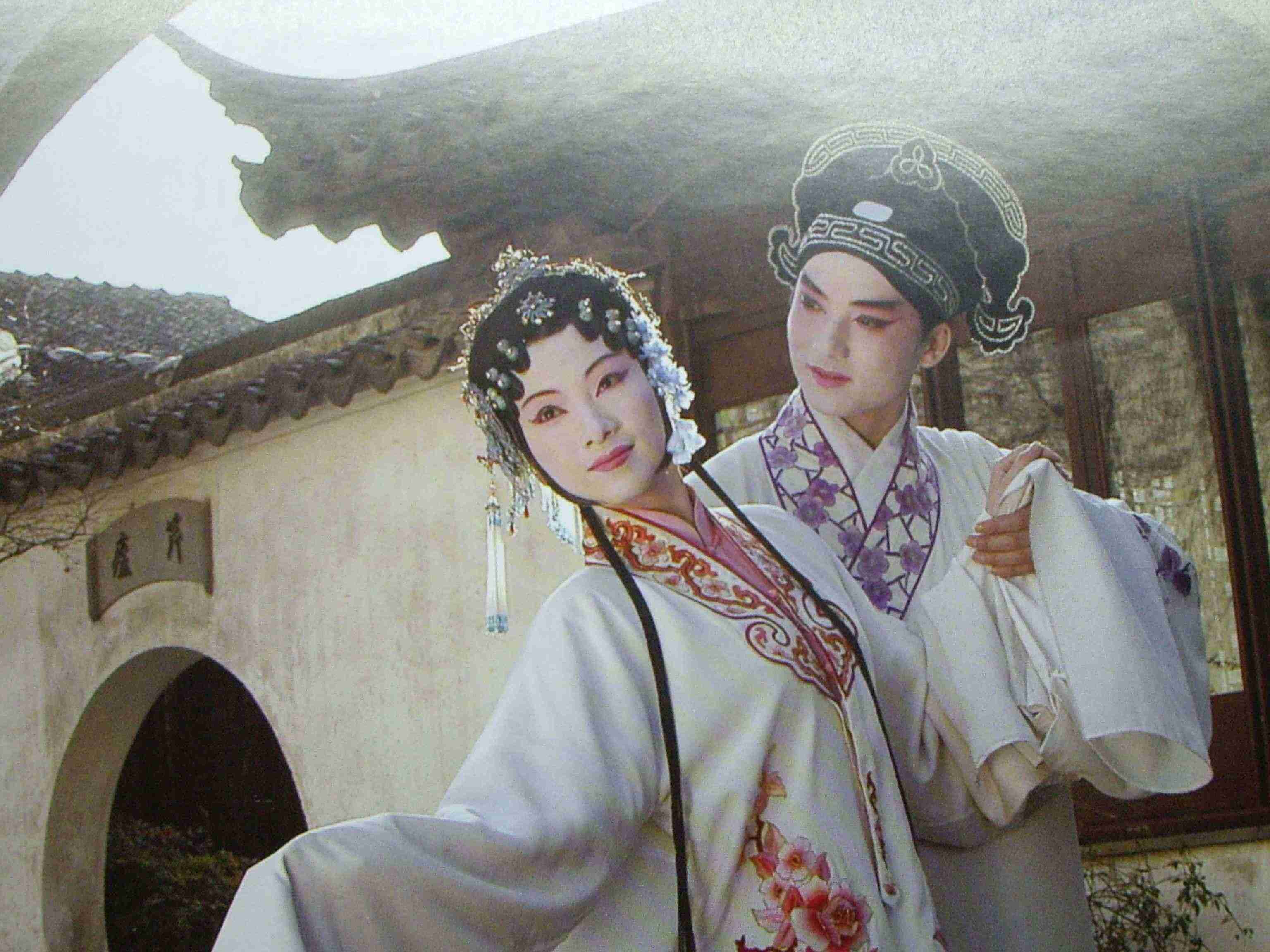Traditional Chinese operas progressed in 20th century

A version of Kunju Opera The Peony Pavilion, modified for young audiences, is popular on Chinese university campuses.
Traditional Chinese operas experienced profound transformations in the 20th century. During this period, Peking Opera and Yueju Opera reached a peak and large numbers of famous opera artists emerged. Other local operas such as Nuo Opera, Puppet Opera and shadow puppetry, which are all rooted in the countryside, demonstrated longevity and inclusiveness of other folk customs. More valuably, Mei Lanfang (1894-1961) and other distinguished artists contributed to adapting Peking Opera and imbued every element of singing, monologues, action and acrobatic fighting with lasting appeal. They created a poetic world laden with symbolism, which utilized stage arts and settings while highlighting the liberal styles of facial makeup, costumes, music and artistic stage design.
In the early 20th century, local operas in China entered into a period of positive development. In the competition between local operas and Kunju Opera in the Qing Dynasty (1616-1911), Kunju Opera declined but local operas, such as Peking Opera thrived on the basis of broader public support. Supporters of the New Culture Movement impacted different schools of thought and praised the theory of evolution. They called Western drama “modern drama” and regarded all traditional operas as “old drama” not deserving of any respect. They sharply denounced traditional operas as “inferior” and “uncivilized,” but strongly supported Ibsen’s dramas on social issues, which showed a deep concern with the social realities of daily life.
However, many Chinese writers and playwrights, such as Lu Xun (1881-1936), Cao Yu (1910-96), Ouyang Yuqian (1889-1962) and Li Jianwu (1906-82) were not constrained by the criticism of supporters of the New Culture Movement. They swam in the confluence between the Eastern and Western cultures, making their works surpass concerns over issues of realism, and were endowed with cultural significance.
Although supporters of the New Culture Movement attracted people’s attention, their strategies lacked the involvement and balance of state power. In the 20th century, China, confronted with domestic strife and foreign aggression, made an effective policy of literature and art into an urgent need. The Chinese Communist Party responded to internal demands and decided to give literature and art a prominent position in developing people’s potential. The new Yangko Opera, popularized in Yan’an, Shaanxi Province, in the 1940s, was a good example of this.
Between the Spring Festival of 1943 and the first half of 1944, more than 300 Yangko Operas were created and performed on stage, and eight million people in Yan’an viewed these shows.
In 1945, The White-Haired Girl, written by He Jingzhi (1924- ) and Ding Yi (1920-98), was first performed by the Luxun Art Academy of Yan’an, which symbolized the formation of modern Chinese opera. The opera shows a white-haired peasant girl who suffered a miserable life in Pingshan County, Hebei Province in the early years of the 20th century and finally joined communist forces. The White-Haired Girl absorbed Hebei folk songs, popular tunes and melodies of local operas, and combined local music styles with elements of Western opera.
After 2000, Kunju Opera, Cantonese Opera, Tibetan Opera and Peking Opera were selected as part of the list of intangible cultural heritage. While people are delighted about the selection, they can strongly feel the severe living conditions shown in traditional Chinese operas. The long life of an art form mainly depends on whether it can absorb new energy through different time periods. Strongly advocated by famous writer Bai Xianyong (1937- ), a version of the Kunju Opera The Peony Pavilion modified for young audiences was popular on university campuses around 2000. It reveals a love story of a gifted scholar and a beautiful lady, combined with exquisite libretto and comic elements, and echoes contemporary Chinese young people’s aesthetic preferences for traditional Chinese operas.
Leng Chuan is from the Institute of Literature at the Chinese Academy of Social Sciences.
